The Palm-Leaf Manuscript Museum is the first of its kind in the world and an invaluable, unique cultural place located in Kerala, India. This is an effort to take care of the age-old tradition of documenting anything from sacred texts and literature to scientific and administrative records, which has been followed for centuries in India and other Asian countries, through the use of palm-leaf manuscripts. The museum gives a marvellous experience and a view of the history, culture, and knowledge of the bygone era, which forms an absolute visit for not only history enthusiasts but also scholars and travellers who love to pick up different nuggets of information.
History Of Palm-Leaf Manuscripts
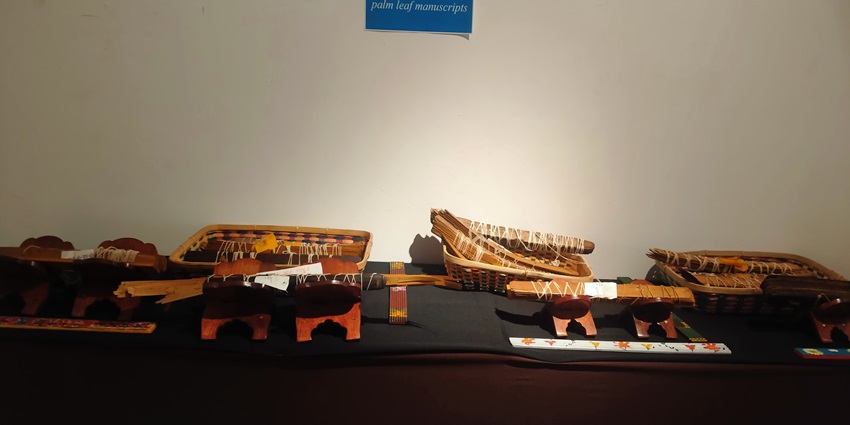
Photo: Adbh266 / Wikimedia Commons / Image For Representation Only
The history of the palm-leaf manuscript goes back thousands of years. The palm leaves became one of the earliest materials used for writing in India, long before the invention of paper. That tradition serves to bind the ancient period when scholars and scribes used to write texts on the leaves of palm trees with the use of a writing tool. Subjects of these manuscripts included religious scriptures, literature, medicine, astrology, mathematics, and law.
The palm leaf manuscripts were a very significant means of keeping and transmitting a record of information both in ancient and medieval India. They were well designed to be very strong and, under the right of conditions, kept for centuries. There was no better brand of rich literary conditions other than Kerala and hence became a prime assigning and conserving centre in the preparation of the palm-leaf manuscripts, making it one of the most unique museums in Kerala.
Suggested Read: Kerala History Museum, Kochi
Palm Leaf Manuscript Museum: Architecture
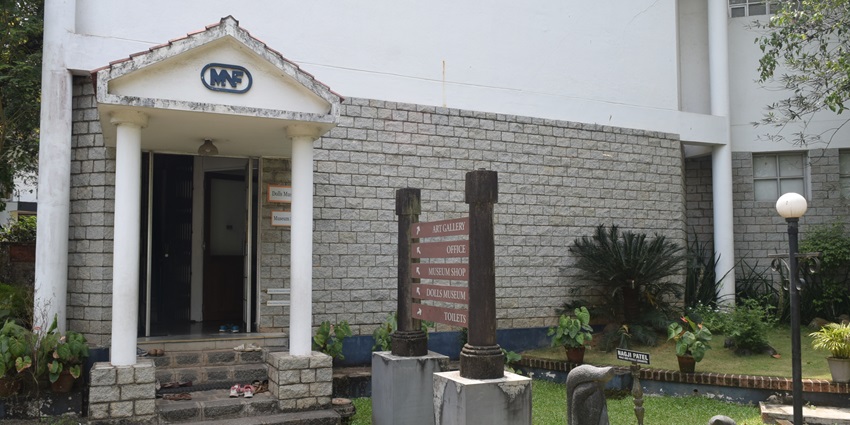
Photo: Ambadyanands / Wikimedia Commons / Image For Representation Only
The Palm-leaf Manuscript Museum is accommodated within a very aesthetically designed building, which is of great attraction to lovers of traditional Kerala architecture due to the used materials through its construction being locally available wood and laterite stone, synonymous with the general architectural heritage of Kerala. The building was constructed with sloping roofs that had tiles on them, wooden beams, and wood-carved doors and windows.
The arrangement of palm leaf manuscripts allows a visitor to walk through the history and importance, without any sort of confusion, in the series of exhibits of the museum. Visitors can see these glorious coloured pictures with the text of pristine detailing and design in big galleries and lit portions.
Palm-Leaf Manuscript Museum: Artefacts
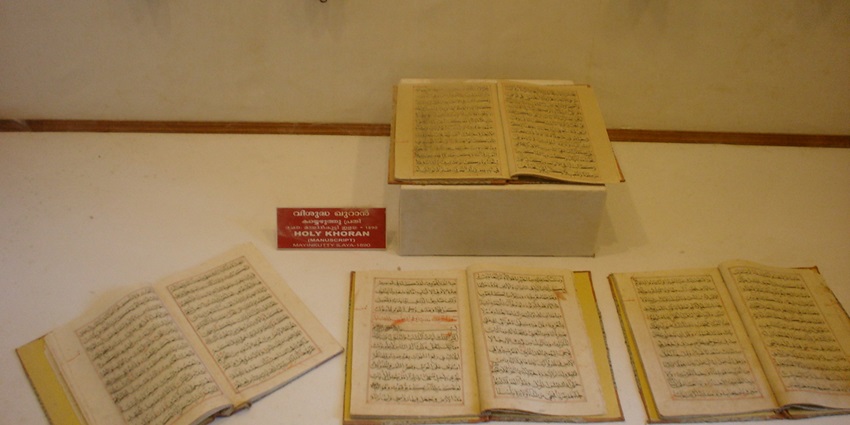
Photo: Shijaz / Wikimedia Commons
The Palm-leaf Manuscript Museum houses various artifacts. The palm leaves’ great tradition is enjoyed by all the following:
Religious Texts: The library has preserved a vast proportion of the religious texts of various religions- Hindu, Buddhist, and Jain. All the treasures of the literature included in these manuscripts are religious messages, prayers, and philosophical writings preserved with a lot of care for so many years.
Literary Works: There are varied kinds of literature: epic poems, classical literature, folk tales, and many such. Thus, these manuscripts give an insight into the literary traditions along with the technique of storytelling in ancient India.
Scientific Treatises: The other manuscripts are based on varied scientific subjects, including medicine, astronomy, mathematics, chemistry, and alchemy. The contents of respective manuscripts thus stand as a testimony to the high order of knowledge and scientific advancements of ancient Indian scholars.
Administrative Records: Administrative data, including royal edicts, land grants, and legal documents, demonstrate how states in early times ruled and managed their affairs. The same data, viewed from the other perspective, provides a great deal of information regarding political and social history.
Charts And Diagrams: Many palm-leaf manuscripts are interspersed with artistic charts and diagrams. These diagrams help to enjoy the text and render the process of reading the palm leaves more clarifying.
Suggested Read: All You Need To Know About Kerala Folklore Museum
How To Reach Palm-Leaf Manuscript Museum
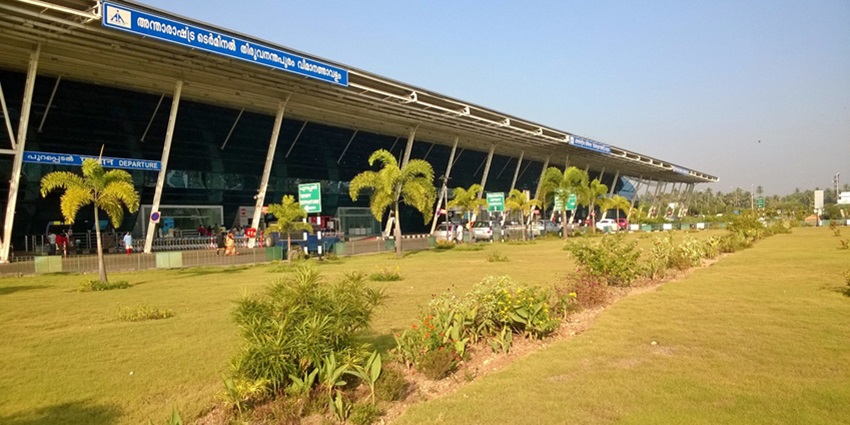
Photo: Muhammed Suhail / Wikimedia Commons
The Palm-leaf Manuscript Museum’s address is in a very convenient part of Kerala and is easily accessible by the best transport systems.
By Air: The major airport is Trivandrum International Airport, which is about 20 km from the museum. The airport links most of the core cities in India and multiple international destinations.
By Rail: The nearest railway station to the museum precinct is Thiruvananthapuram Central. It is located 15 km from the facility. All important towns are connected with that station in most parts of India.
By Road: The museum is easily accessible by road. There are facilities for bus service up to the front gate and taxis to the very near entrance. Besides, public convenience for private vehicles on hiring grounds is available with a flexible drive.
Places To Visit Near Palm Leaf Manuscript Museum
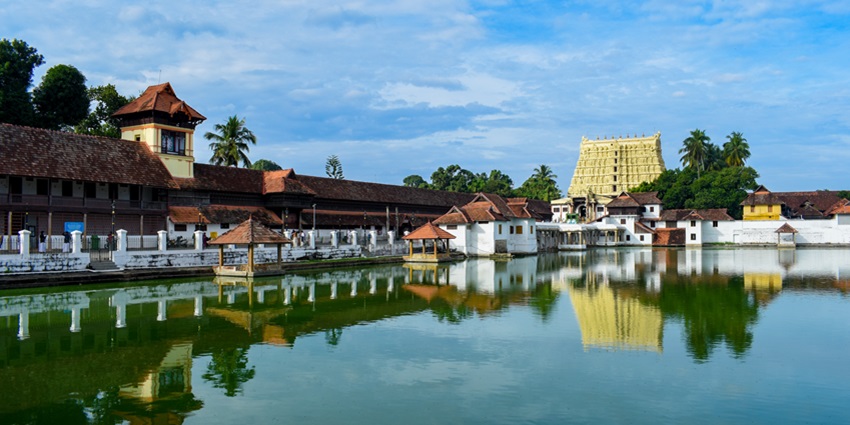
Photo: Prasanthajantha / Wikimedia Commons
Besides the Palm Leaf Manuscript Museum, many other attractions are there around.
Padmanabhaswamy Temple: It is an ancient temple of Lord Vishnu in Thiruvananthapuram. This temple is known for its charismatic archaic style as well as an old legacy.
Kovalam Beach: It is one of the most sought-after tourist destinations with enchanting sandy beaches. This is the ultimate destination for relaxation and spending time.
Napier Museum: This museum in Thiruvananthapuram has so many collections, from ancient sculptures and coins to musical instruments. It gives a complete experience of the cultural heritage of Kerala.
Kuthiramalika Palace Museum: Fondly known as Puthenmalika Palace, it is a true display of Kerala’s royal antiquity. Inside, some beautiful wooden carvings and a wealth of exhibits can be seen here.
Kanakakkunnu Palace: Built on a “golden hill” overlooking Thiruvananthapuram, this former royal guest house features Kerala and Gothic architectural styles. The palace boasts lavish interiors with crystal chandeliers and royal furniture, and its grounds include meadows, groves, and flowering shrubs. It is also home to India’s first digital garden. Currently, the palace hosts various cultural events and exhibitions.
Thiruvananthapuram Zoo: One of the oldest zoos in India, established in 1857. It spans 55 acres and houses a diverse collection of animals and birds, including tigers, leopards, and various bird species.
Madavoor Rock View Point: Located about a 40-minute drive from Thiruvananthapuram, it offers wide scenic views from atop a rock, including sunset vistas. It features a 9th-century rock-cut Shiva temple and amenities such as a children’s park and a cafeteria.
Shri Chitra Art Gallery: Located near the Napier Museum and Thiruvananthapuram Zoo, this gallery houses a significant collection of paintings and artefacts. It displays works by renowned Indian and international artists, including Raja Ravi Varma and Nicholas Roerich. The gallery also features traditional Keralan artworks, murals, sculptures, and works from various schools of art like Mughal, Rajput, and Tanjore.
Suggested Read: All You Need To Know About Kerala State Science And Technology Museum
Other Factors To Consider
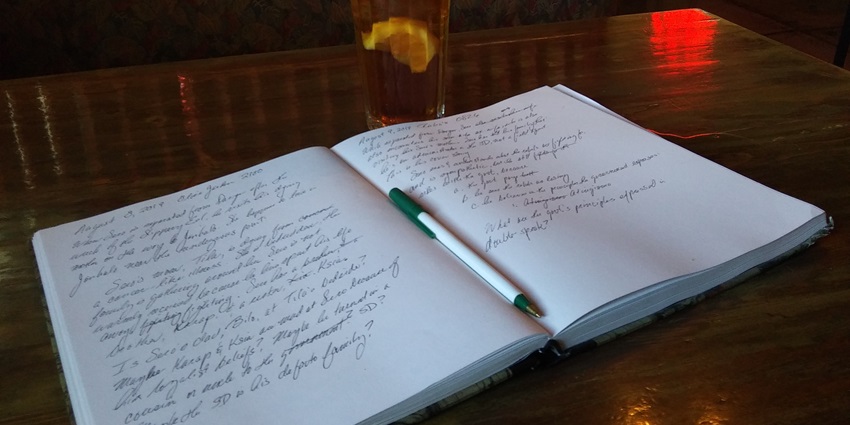
Photo: Phil Slattery / Wikimedia Commons / Image For Representation Only
Entry Fees: The Palm-leaf Manuscript Museum’s ticket price is INR 50 for Indian citizens and INR 100 for foreign tourists.
Timings: The Palm-leaf Manuscript Museum’s timings are from 10:00 AM to 5:00 PM. It remains closed on Mondays and national holidays.
Tips For Travelers: Click Palm-leaf Manuscript Museum’s photos but It is always good to follow the museum’s photography policies. Plan a visit during the off-peak hour to avoid the crowd.
The Palm-leaf Manuscript Museum in Kerala is the repository of knowledge, history, and culture. It is a gateway to the enormous heritage and hidden treasures in the Palm-leaf manuscripts and gives one a glimpse of ancient times. Whether a history buff, researcher, or inquisitive traveller, a visit to this museum will leave visitors enthralled and deeply connected with culture. Plan your visit and explore the amazing facts of palm-leaf manuscripts.
Cover Photo: Manoj Choudhury / Wikimedia Commons / Image For Representation Only


 WhatsApp
WhatsApp
 Twitter
Twitter









